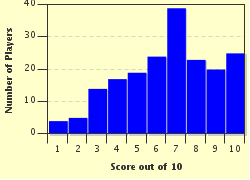Quiz Answer Key and Fun Facts
1. When the heart stops beating, the brain is affected in many ways. Which of these listed is NOT one of them?
2. What is induced hypothermia?
3. Unfortunately, not all survivors of cardiac arrests are suitable candidates for induced hypothermia.
Which of these listed below would be a suitable candidate for induced hypothermia?
4. Hypothermia inducing modes may be invasive or non invasive.
5. When inducing hypothermia, a primary goal of management is to PREVENT SHIVERING.
Why should shivering be prevented?
6. Which of the follow categories of drugs may be used to prevent shivering and provide comfort during induced hypothermia?
7. When assessing a patient during hypothermia therapy, which of the following clinical features will you NOT expect to find?
8. During hypothermia, there's a decrease in the release of insulin from the pancreas. Consequently, which of these features should one expect?
9. Induced hypothermia is not without its problems. Hypothermia causes potassium to be shifted into the cells resulting in low serum levels of potassium. Some patients also experience 'cold diuresis' causing them to urinate excessively.
During hypothermia the patient may manifest with all of the following features EXCEPT
10. Once the hypothermia therapy is completed, the patient has to be rewarmed.
Which of the following measures is NOT implemented during the rewarming phase?
Source: Author
yency
This quiz was reviewed by FunTrivia editor
crisw before going online.
Any errors found in FunTrivia content are routinely corrected through our feedback system.

